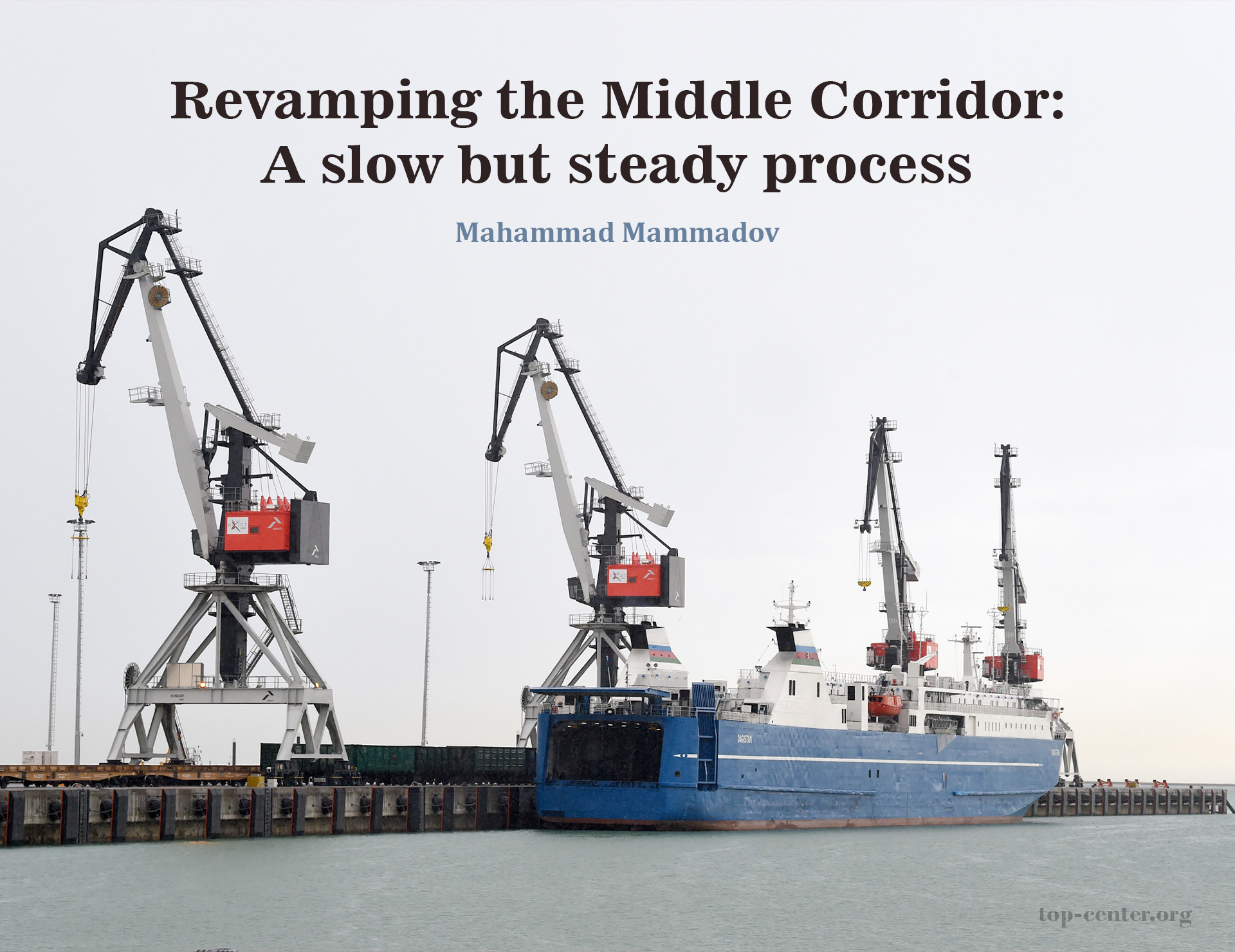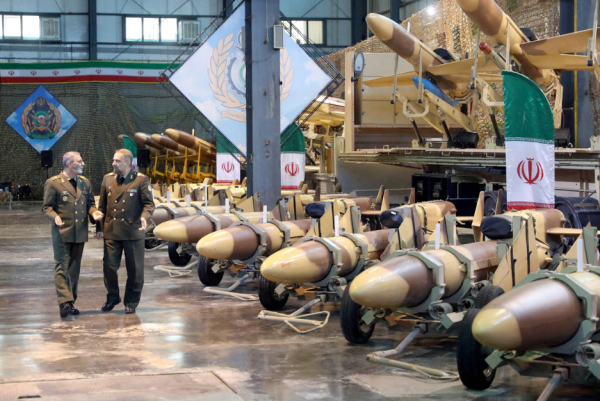Revamping the Middle Corridor: A slow but steady process

More than a year after Russia’s invasion of Ukraine, the Eurasian railway connectivity linking China to the EU is in disarray. Traditional routes running through Russia are indirectly affected by Western sanctions and alternatives are yet to emerge to accommodate a large amount of cargo diverted from the north. According to the Eurasian Rail Alliance Index, the Northern Corridor saw a 31 percent decrease in bookings in 2022 as European carmakers and large logistics companies shifted to other modalities - mainly maritime shipping - to avoid sanctions. The Middle Corridor running through Central Asia, the Caspian Sea, South Caucasus, and Türkiye (or the Black Sea) emerged as a viable alternative, with some 33,000 TEU containers passing through the route to reach customers in Europe and Asia. Currently, the Trans-Caspian route can handle up to 5 percent of intercontinental rail trade and this number can be increased to 15 percent if the transit countries make necessary adjustments.
A recent EBRD report draws a brighter future for the Middle Corridor, putting its transit potential as high as 1.4 million TEUs by 2040. Comparably, it is almost 4 times the number of containers transported between the EU and China through the Northern Corridor in 2022. Taking into account that the development of the Eurasian rail connectivity is contingent upon a wide range of factors, from the future direction of the EU-China trade to security dynamics in different geographies it passes through, the prospects of the realization of this potential are difficult to see now. Adding to this the multimodal nature of the route and the Middle Corridor countries’ lack of organizational capacities, the chances look rather slim.
The EBRD says upgrading the Trans-Caspian transport capacity to that level will require more than 18 billion euros of hard and soft infrastructure investment and serious political commitment by participating countries. On the soft infrastructure side, Azerbaijan, Georgia, and Kazakhstan need to take coordinated measures related to the digitalization of transport documents, improving interoperability, enhancing the PPP environment, facilitating trade, liberalizing markets, improving tariff-setting mechanisms, and increasing the funding allocation for asset maintenance. Lack of transparency, limited regulatory harmonization, and challenges associated with fair access to infrastructure are major bottlenecks to be dealt with soon to provide smooth transfer of cargo along the route. These steps are necessary to proceed with hard infrastructure investments that mainly include further development of rail and port capacities on both sides of the Caspian Sea and the construction of multimodal logistics centers and auxiliary network connections.
As in previous years, Azerbaijan and Kazakhstan have been major stakeholders in pushing forward with investments and institutional cooperation to leverage the Middle Corridor’s potential after Russia’s invasion of Ukraine. Baku allocated 100 million USD for upgrading the transport capacity of the Georgian section of the Baku-Tbilisi-Kars railroad from 1 million tonnes to 5 million. It is necessary for handling the growing amount of cargo in the Alat port which after the completion of the second phase of construction will reach 25 million tonnes (500,000 TEUs) capacity. When it comes to the vessels for maritime transit, Baku Shipyard and ASCO, the operator of Azerbaijan’s merchant fleet, doubled the number of vessels in the Caspian Sea in a year’s time, while ADY Container and ASCO put two vessels in the Black Sea to connect Georgia’s ports of Poti and Batumi with Romania’s Constanta port. Similarly, Kazakhstan rolled up its sleeves to bolster the throughput capacity of its railways and Caspian Sea ports in Aktau and Kuryk. In cooperation with international partners, Astana is planning to increase container shipments in Aktau to 215,000 TEUs per year. Furthermore, the construction of a multifunctional marine terminal in Kuryk port by 2025 is expected to add another 9.4 million tons to Kazakhstan’s transit capacity. In this context, Georgia’s renewed interest in realizing the Anaklia port project in the Black Sea can only be a good omen for the collective efforts to adapt the Middle Corridor to the new realities of Eurasia’s land connectivity.
Yet, more important and timely steps have been taken on soft infrastructure issues. In November 2022, foreign and transport ministers of Azerbaijan, Georgia, Kazakhstan, and Türkiye signed a roadmap for the simultaneous elimination of bottlenecks and the development of the Middle Corridor for 2022-2027 with an aim to increase its capacity to 10 million tonnes per year by 2025. In June, Azerbaijan and Kazakhstan signed an agreement to establish a joint logistics company that will oversee unifying tariffs, simplifying transit procedures, and handling all cargo along the Trans-Caspian route. Georgia signed the document during the Kazakhstani Prime Minister’s visit to the country in June. Partnership frameworks like these are expected to alleviate soft infrastructure challenges by lowering transaction costs and increasing operational efficiency, thus improving the Middle Corridor’s competitive advantage vis-a-vis alternative routes.
That being said, a revamped Trans-Caspian route does not only mark new opportunities for intercontinental rail connectivity but also signifies changing dynamics in the geopolitics of the Eurasian heartland which will in turn shape the future viability of the route for intra-regional and inter-regional trade. Traditionally, the Middle Corridor’s evolution into a reliable rail route has been affected by politico-economic developments in three major spheres: relations between the transit countries; relations between transit countries and the EU and China; relations between Brussels and Beijing. Although remarkable changes had already been underway in all spheres on the eve of Russia’s invasion of Ukraine, a whole host of new circumstances have been thrown into the mix after February 24, 2022.
To begin with, the Middle Corridor countries have come to see the route as a geopolitical tool to deepen mutual partnerships against the background of an emerging power vacuum in the region. Trans-Caspian connectivity is now an essential component of foreign policy diversification strategies of these states, providing access to global markets by decreasing dependence on the Russian route, and strengthening regional resilience to possible external shocks. Kazakhstan, a Russian ally and member of Russia-led military and economic organizations, has been the most adamant in this endeavor as its refusal to toe Russia’s line on Ukraine exposed its transit dependence on Russia to the Kremlin’s wrath. Not surprisingly, Astana has been trying to increasingly shift to the Trans-Caspian route to bring its strategic resources - oil, grain, and uranium, among others - to different markets. Similarly, Uzbekistan started to use the Middle Corridor to deepen its partnership with Azerbaijan and Türkiye. The construction of the China-Kyrgyzstan-Uzbekistan railroad is expected to facilitate this process. Azerbaijan, on its side, sees the Middle Corridor as an opportunity to bolster the central pillar of its regional strategy, the Azerbaijan-Georgia-Türkiye triangle, to balance the Armenia-Russia-Iran axis in an increasingly unpredictable neighborhood. The route is also an optimal link in Azerbaijan’s pivot to Central Asia in close cooperation with Türkiye. For Ankara and Baku, the growing Trans-Caspian partnership epitomizes the dedication to a stronger Turkic world in a region traditionally dominated by Russia and China.
The rise of the Middle Corridor also generates a narrative shift in the way the member countries have been seeing its centrality for their economic resilience. If previously the focus has been on transit fees as the main source of revenue, now these countries highlight the importance of establishing functioning regional production networks and integration into regional value and supply chains. Energy-rich countries such as Azerbaijan and Kazakhstan have especially been loud about it, underlining its strategic value for their post-oil economies.
As vital as individual initiatives are to achieve these goals, engagement with the EU and China is equally important to attract investment and geopolitical backing. Sanctions on Russia and Iran have been a gift from heaven in this regard, elevating the strategic importance of these countries in European and Chinese calculations. As Russia’s invasion plans went wrong, Brussels and Beijing rushed to fill the vacuum in the South Caucasus and Central Asia where the Middle Corridor could come in handy for reaching the untapped resource potential of the region. From the first-ever EU-Central Asia summit to the declaration of a new energy partnership with Azerbaijan, Brussels, and influential member states - France, Germany, and Italy - declared interest in stronger regional connectivity to diversify their dependence on strategic raw materials away from Russia and other hostile powers. Beijing has also been striking new deals with the Central Asian republics to expand its economic footprint in the region. Yet, Brussels and Beijing’s growing interest in the Middle Corridor has not yet translated into stronger support for the route in terms of hard and soft infrastructure investments. More importantly, there is a clear lack of coordination between the EU and China on this issue and it can get even worse due to deepening cracks in Brussels-Beijing relations.
From the start, the EU-China rail connectivity has been built on the marriage of politically-driven subsidies provided by the Chinese government with the European carmakers’ and electronic companies' business interests in China. Now, growing rifts between Beijing and Brussels which became more salient after Russia’s invasion of Ukraine cast a shadow over the future viability of this scheme. If the two sides were discussing ways of coordinating China’s Belt and Road Initiative with the EU’s connectivity projects in the 2010s, today Brussels presents its Global Gateway Initiative as a competitor to the BRI, opening the doors of a zero-sum game for Eurasian connectivity. Italy, the first G7 country to join BRI in 2019 now intends to leave the project and major European economies will not attend this year’s BRI forum. This gradual economic decoupling does not in itself mean the end of the EU-China rail trade as specific products, notably Chinese batteries and electric cars will keep it afloat but the transit countries in the Middle Corridor should take note of evolving tensions in EU-China relations and Beijing’s continuing interest in subsidizing the Northern Corridor despite the war in Ukraine. Russia’s economic isolation opened windows of opportunity for the Middle Corridor countries to position themselves as pivotal players in Eurasian connectivity and they need to weigh their moves carefully according to changing geopolitical and geoeconomic realities in the region and beyond.







